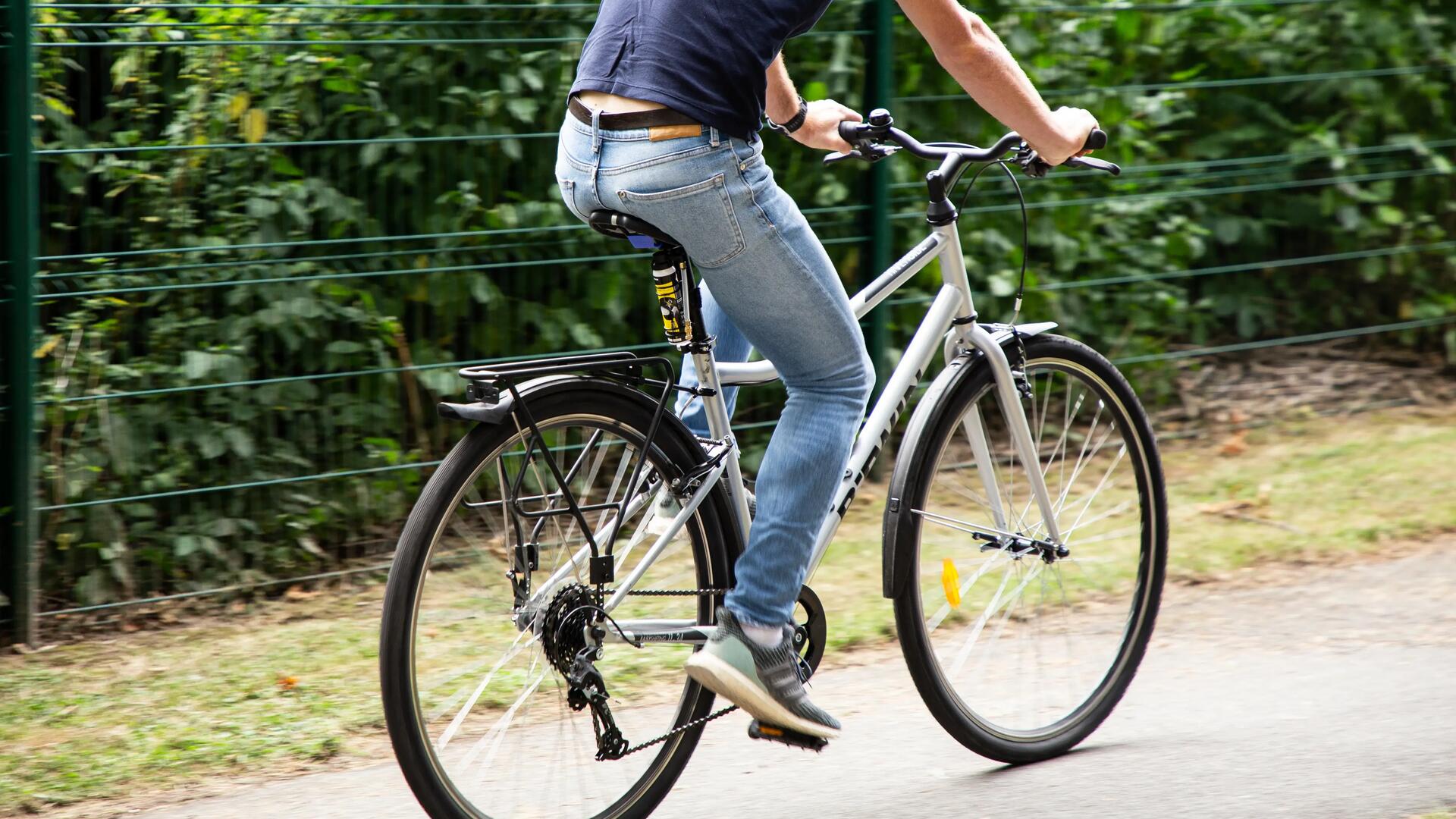Required tools
If your wheel is not equipped with a quick-release mechanism, you’ll need some additional tools to remove it:
- Allen wrench (usually 4- 5- 6 mm or a 15 mm wrench for bolts).

Changing a bicycle inner tube may seem daunting, but it’s actually quite straightforward, and even gratifying, when you know what steps to follow.
If your wheel is not equipped with a quick-release mechanism, you’ll need some additional tools to remove it:
- Allen wrench (usually 4- 5- 6 mm or a 15 mm wrench for bolts).
How to change a bicycle inner tube
Purchase a new bicycle inner tube. We recommend placing your bicycle upside down on a work stand so that it is stabilized while you work.
For the rear wheel:
- Move the chain to the smallest gear
- Release the brakes
- Unscrew the quick-release mechanism
- Pull the derailleur toward the rear, then remove the wheel
For the front wheel:
- Release the brakes
- Unscrew the quick-release mechanism
- Remove the wheel
- Unscrew the valve to deflate the bicycle inner tube
- Insert tire levers between the edge of the rim and tire
- Slide the levers in opposite directions to detach the tire from the rim
- Remove the bicycle inner tube
- Carefully inspect the rim strip to check its condition (smooth and centred). A poorly positioned rim strip could cause a flat tire.
- Partially inflate the new inner tube to approximately 30 percent of its capacity.
- Very carefully, so as to avoid injury, check the inside of the tire for debris.
- Slip the valve through the hole in the rim and insert the bicycle tube into the tire
- Put the tire back on the wheel, making sure the edges slip under the rim, then inflate the inner tube, but without surpassing the recommended maximum pressure (which is indicated on the sides of the tire).
- Replace the wheel and reinstall the brakes.

Tip: Check your tire pressure as regularly as possible to prevent diminished performance and premature wear caused by over-inflation.